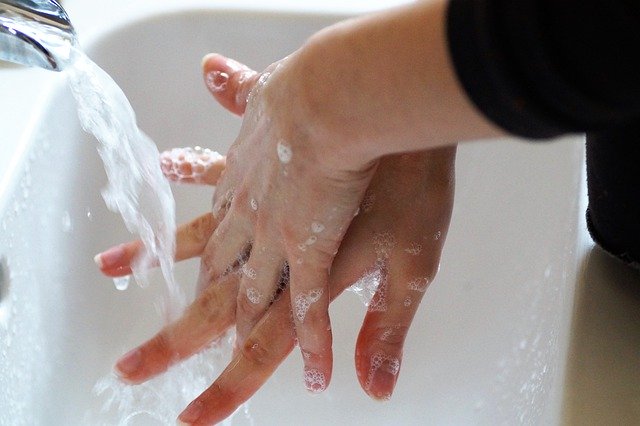One of the most effective actions to reduce the spread of pathogens, thereby preventing infections, is handwashing. This takes on critical importance in the Covid-19 pandemic as everyone, including health care staff, has a role by practicing frequent handwashing.
Hand Hygiene Day is celebrated on 5 May annually. Its goal is to mobilise everyone to increase hand hygiene in daily life, particularly in health care facilities, thereby protecting patients and health care staff from infections.
The campaign theme for 2020 is “Save lives: Clean your hands” and as 2020 is the Year of the Nurse and Midwife, the theme recognises nurses and midwives as deserving of appreciation in their front-line roles in the provision of health care and emphasises their critical roles in infection prevention.
The World Health Organization’s (“WHO”) aims in the 2020 campaign are to make hand hygiene a global priority; inspire hand hygiene and behaviour change; and engage with health care staff in their role in clean care and prevention of infections.
The WHO campaign also calls on policymakers to provide safe work environments for nurses and nurses and improve staffing levels; infection prevention and control leaders to empower nurses and midwives in the provision of clean care; and contributes to the United Nations Secretary General’s Global Call to Action on WASH in health care facilities.
Malaysian Data
Goal 2 of the Malaysian Patient Safety Goals (“MPSG”) is to implement the WHO’s 1st Global Patient Safety Challenge “Clean Care is safer care” with a target of 75% or more average hand hygiene compliance rate.
Reporting on the MPSG goals to the Patient Safety Unit of the Health Ministry has been voluntary.
In 2018, 1,856 of 11,066 health care facilities submitted their reports. Of the 222 facilities that submitted a report on Goal 2, 210 achieved the target with a national average compliance rate of 88%.
However, the variation is interesting. The range in Health Ministry hospitals was from 68.75% to 99% with an average of 88%. The range in university hospitals was from 80.75% to 92.36% with an average of 85.56%. The range in armed forces hospitals was from 82.06% to 95.38% with an average of 88.25%. The range in private hospitals was from 56% to 98.6% with an average of 84.62%. There was no data from the Health Ministry’s Klinik Kesihatan and private general practitioner clinics.
As in most countries, nurses and midwives have the highest compliance rate, followed closely by specialist doctors with junior doctors and other health care staff behind.
In the light of the Covid-19 pandemic, which has no definitive treatment, it is time to change the target of Goal 2 to 100% average hand hygiene compliance rate; and ensure that reporting by all health care facilities is made mandatory.
WHO Messages
The WHO messages for the 2020 campaign are:
• Nurses: “Clean and safe care starts with you.”
• Midwives: “Your hands make all the difference for mothers and babies.”
• Policy Makers: “Increase nurse staffing levels to prevent infections and improve quality of care. Create the means to empower nurses and midwives.”
• Infection Prevention Control (“IPC”) Leaders: “Empower nurses and midwives in providing clean care.”
• Patients and Families: “Safer care for you, with you.”
Various promotional activities have been suggested, which include Certificates of recognition for excellence in hand hygiene and infection prevention and control; expressed governmental commitment to hand hygiene and the campaign; clap initiative to recognise the role of nurses and midwives.
The certificate of recognition can be given to individuals and teams for “actions that increased adherence to hand hygiene practices and/or other IPC practices and/or reduced health care-associated infections; implementation of hand hygiene and/or IPC training programmes; developing and implementing hand hygiene/IPC guidelines adapted from WHO guidelines and hand hygiene/IPC research with successful practical implications.”
The WHO has recommended to governments to improve access to hand hygiene stations by “providing universal access to public hand hygiene stations and highly encouraging their use before entering any public or private commercial building and any public transport facility; and improving access to hand hygiene facilities and practices in health care facilities.”
The Health Ministry can demonstrate their commitment in the print and electronic media.
The clap initiative involves stopping for a few minutes at noon to “clap for nurses and midwives to thank them and recognise their critical role in delivering clean care through IPC and hand hygiene best practices.”
All readers are requested to acknowledge our nurses and midwives’ vital role in infection prevention and control with regular and frequent handwashing.

Dr Milton Lum is a past President of the Federation of Private Medical Practitioners Associations, Malaysia and the Malaysian Medical Association. This article is not intended to replace, dictate or define evaluation by a qualified doctor. The views expressed do not represent that of any organization the writer is associated with.
- This is the personal opinion of the writer or publication and does not necessarily represent the views of CodeBlue.








